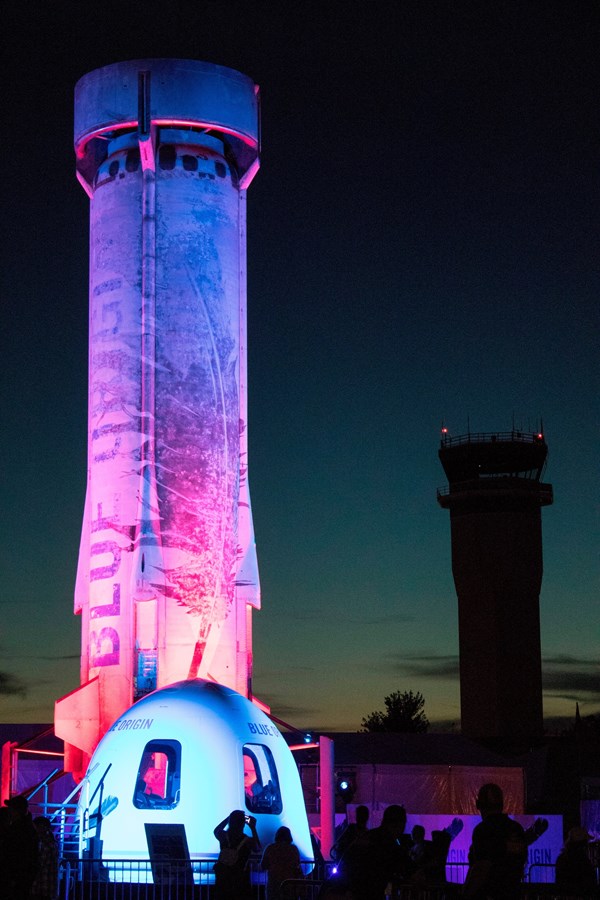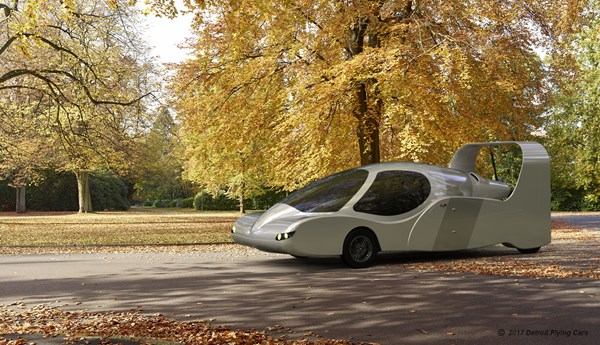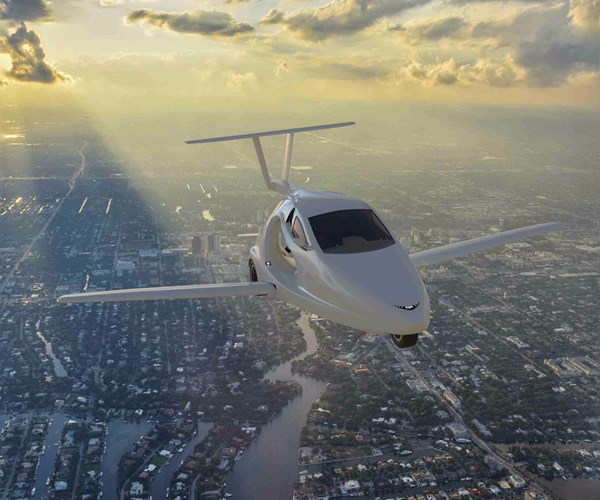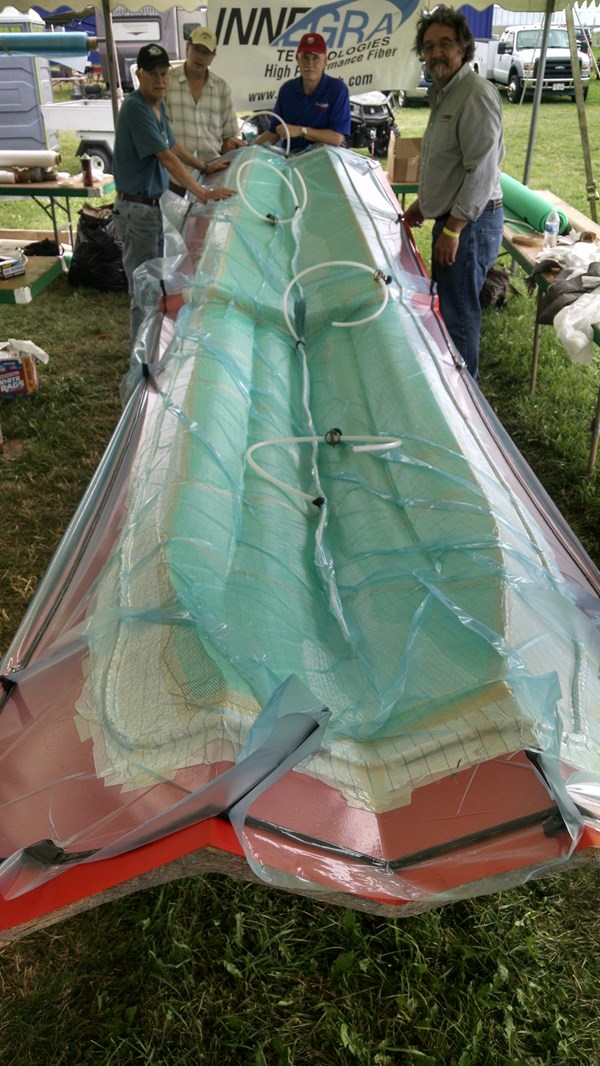Aviation’s big US show: Oshkosh 2017 highlights
The 2017 edition of the Experimental Aircraft Assn.’s (EAA) AirVenture airshow event, held in Oshkosh, WI, US, from July 24 – 30, was another blockbuster.

Aerial view of the 2017 edition of the EAA’s AirVenture air show event (photo by EAA, Craig VanderKolk).
The 2017 edition of the Experimental Aircraft Assn.’s (EAA) AirVenture airshow event, held in Oshkosh, WI, US, from July 24 – 30, was another blockbuster. Even though I could not attend in person, there was plenty of information to choose from to experience the event vicariously. Attendance was an all-time high, with 590,000 attending, an increase of 5% over last year, said the EAA, and CEO and chairman Jack Pelton called it the best AirVenture week that he’d ever seen.
Air show highlights included the US Navy Blue Angels team, and a salute to our nation’s bombers. In addition to a massive B-52, first introduced in 1955 and still in service, a B1 Lancer and a B2 bomber participated in a salute to bombers, along with two restored B-29s, a dozen B-25s and two B-17s and a cadre of smaller warplanes. For those interested in videos of the bomber parade recorded at the show, a number of YouTube videos are available (here’s one: https://www.youtube.com/watch?v=krQeUeqTO4k).

Arrival of the B-52 bomber at Oshkosh (photo by EAA, Adam Schuett).
The Airbus A400M Atlas made its first appearance at a US civilian air show, at least for several hours. The aircraft, in service with the British Royal Air Force, is in the US as part of a joint training exercise, says Barton Greer, senior manager of corporate communications for Airbus. “It’s quite a win to get the aircraft here, since it now belongs to the Royal Air Force, although it is an Airbus platform,” Barton said. “We like to promote it as the airlifter of the 21st century.”
Airbus also showcased two new projects: Vahana and Transpose, both launched last year by Airbus’ San Jose, CA, US-based A3 (pronounced “A-cubed”) incubator initiative, whose goal is to “disrupt Airbus Group and the rest of the aerospace industry before someone else does,” according to the company. Vahana is a self-piloted aircraft designed to carry a single passenger or cargo, which Airbus wants to make “the first certified passenger aircraft without a pilot.” A small-scale mock-up of Vahana was among the “urban air mobility” vehicles on display at the Airbus Pavilion. Vehicle design is complete, many critical subsystems have been developed or procured, and production partnerships are established, Airbus said. A full-size prototype is scheduled for completion by year’s end, and a demonstrator by 2020. Voom, an on-demand-via-app helicopter air taxi service, is currently being tested in Sao Paulo, Brazil.

Blue Origin’s New Shepard spacecraft at Oshkosh (photo by EAA, Laurie Goossens).
Towering over the massive airframes covering Boeing Plaza and looking more like an industrial smokestack than an advanced aerospace vehicle, stood Blue Origin’s (Kent, WA, US) New Shepard, the reusable vertical takeoff and landing launch system for suborbital space tourism envisioned by Blue Origin’s founder, Amazon’s Jeff Bezos. The rocket achieved its milestone first vertical landing on November 23, 2015, and after minimal refurbishment the same booster made four subsequent flights in 2016. This was the first public display of the New Shepard. While at the fly-in, guests could take a simulated suborbital flight of their own in a 1-to-1 scale mockup of the capsule that will launch tourists aboard the spacecraft.

The Stratos 714 very light jet (VLJ) made its first appearance.
Several other new aircraft and prototypes made first appearances. On Monday July 24, Stratos Aircraft unveiled its Stratos 714 very light jet (VLJ), a four/six-place, 400-knot, single-engine personal jet with a 1,500-nm range and 41,000-foot service ceiling. Stratos president and CEO Michael Lemaire says that the aircraft project was launched amidst the VLJ craze more than a decade ago because he was looking for an aircraft with more performance. Some 11 companies were aiming to market VLJs at the time, and while most folded, Stratos persevered. However, Stratos “kept quiet for a few years,” says Lemaire. The composites-intensive jet first flew last November.The jet has now concluded its first flight-test phase prior to its flight to Wittman Regional Airport. Next, Stratos will expand the flight-test envelope, and when ready for certification, will seek outside investors. Lemaire estimates the project could require “in the area of $200 million” and take three to four years.
The next-generation, in-development SureFly personal helicopter by Workhorse Group (Loveland, OH, US) made its US debut at the event, after being unveiled at the 2017 Paris Air Show. Developed over the past year, the SureFly aims to make helicopters easier, safer, and less costly to fly. Constructed of carbon fiber, the entire SureFly airframe weighs less than 300 pounds. Four arms extending outward above the cabin each contain two motors, driving counter-rotating propellers — one above and one below — at the end of each arm. Projected top speed is 70 mph, and the flight ceiling is currently planned to be 4,000 feet AGL, though it’s capable of flying much higher. When not in flight, the arms can be folded down to save on storage room, or to ease transport on the ground.

Detroit Flying Car’s concept, shown as a plane with wings deployed.
An ambitious startup headed by Sanjay Dhall, Detroit Flying Cars (Detroit, MI, US), aims to break into the flying personal vehicle market, and had on display a nearly complete prototype at the event. The company’s carbon composite design is based on retracting the main wings, and a front canard, completely into the car body/fuselage when the vehicle is driven as a car, according to an EAA press article by Randy Dufault. The challenge was how to collapse the wing, which has the same area as a Cessna 150 aircraft, into a space only 6 feet wide, behind the car body/fuselage’s seats. Consequently, the prototype’s left canard is higher than the right, and the back wing follows the same high-low, asymmetric design.

Detroit Flying Car’s concept, shown as a car, with wings and canard stowed within the fuselage/body.
The company’s goal, says Dhall, is a product that people will believe is a car, and not an airplane that is too complex. Traditional reciprocating propulsion drives the craft’s pusher propeller. On-the-ground movement comes from electric motors, that require no gears or transmission. Detroit Flying Cars hasn’t yet decided whether to offer the design as a kit or pursue a manufacturing option.

The Switchblade composite flying car/motorcycle will be sold as a kit, with 200 customers already on the reservation list.
Yet another new flying car, the Switchblade, was introduced on Tuesday July 25. Samson Motors (Meadow Vista, CA, US) unveiled its Switchblade flying sports car project during a press conference. The Switchblade, which is expected to fly in the fall, is technically a 3-wheeled motorcycle when driven on roads, with its wings folded up into a protective clamshell, and will be an experimental aircraft in the skies. With plans to sell the vehicle as a kit, the estimated kit assembly time is three weeks, as Samson will have assembly lines set up where homebuilders can work on their kit with help from staff members. Samson estimates the cost of the kits at $140,000, which includes avionics and a four-cylinder, turbocharged engine. The aircraft parts of the Switchblade are built to FAR 23 standards, using TenCate Advanced Composites (Morgan Hill, CA, US) 12K carbon/epoxy prepreg, although the company’s Sam Bousfield tells CW that if production continues to ramp, they may shift to a significantly faster proprietary infusion system involving a UV cure. The Switchblade can reach speeds over 100 mph on the ground, and its top speed in the air is around 190 mph, with a cruise speed of 160 mph, and its range is about 450 miles. Samson says 58 units have been pre-sold, and 200 people are on the reservation list. More information can be found at samsonmotorworks.com.
A prototype personal electric aircraft, the Flyer, was demonstrated by Kitty Hawk (Mountain View, CA, US) at the EAA Seaplane Base. The Flyer is a single-person, battery electric-powered “multicopter” designed to operate over fresh water. A pilot certificate is not required, and the company says the amount of training required is minimal, according to an EAA press release. Kitty Hawk director of engineering Todd Reichart told EAA during the demos, “The motors can be made lighter than an equivalent gas-powered engine, but the batteries are certainly the biggest weight challenge.” Numerous videos show the Flyer in action: https://www.youtube.com/watch?v=mMWh4W1C2PM.

A new composite propeller for the King Air aircraft was on display, a collaboration between Hartzell Propeller and Raisbeck Engineering (photo source: KingAirNation.com).
The large exhibits included a new composite five-bladed swept propeller for the Beechcraft – Textron Aviation King Air 350, produced by Raisbeck Engineering (Waco, TX, US) in partnership with Hartzell Propeller (Piqua, OH, US). The supplemental type certificate for the propeller is expected soon, with production following “very quickly,” said Tony Armstrong, CEO and CFO of Raisbeck. It’s the first composite swept blade propeller developed by the two companies together. The large-diameter (2.7m) propellers maximize thrust, increase performance, and reduce noise, according to the two companies. Moreover, a pair weighs 47 pounds less than the OEM propellers. From a safety perspective, the propellers also reportedlyl improve single-engine climb performance.

Innegra’s Russ Emanis held a 4-day infusion demonstration at the Oshkosh event. This floatplane float part was part of the demo (photo source: Russ Emanis/Innegra).
As in past years, Innegra Technologies (Greenville, SC) again spearheaded the Advanced Composite Infusion event during the show, a four-day demonstration overseen by Innegra’s Russ Emanis and conducted at the Replica Fighter Assn. tent. This year, Emanis and his team, volunteers from material sponsor companies, layed up and infused the center section of an 82% scale F4U Corsair warbird replica as well as a brand new float for experimental float plane. The float molds were provided by Skyranch Innovations (Sandpoint, ID, US). Resin was donated by Scott Bader North America (Stow, OH, US) for the F4U part, along with TeXtreme spread-tow carbon woven reinforcements donated by Oxeon (Borås, Sweden). Texonic (St-Jean-sur-Richelieu, QC, Canada), Composites Envisions LLC (Wausau, WI, US) and Fiberglass Supply (Burlington, WA, US) provided reinforcements primarily for the float, wet out with epoxy resin donated by Composite Polymer Design/Endurance Technologies (South St. Paul, MN, US). Innegra provided fiber for both parts. T.E.A.M. Inc.(Wonsocket, RI, US) committed to sponsoring/supplying reinforcement products for the demo as well.
Emanis says he had eight volunteer assistants this year to assist with the processing. German Advanced Composites Inc.(Miami, FL, US) donated its MTI infusion hoses. Hawkeye Industries Inc.(Bloomington, CA, US) supplied mold releases, fairing compounds, tooling materials and more. DIAB Americas LP (DeSoto, TX, US) provided core material. “This is all about education,” says Emanis. “We demonstrated single bag and double-bag infusion methods, and people saw the differences between epoxy and vinyl ester infusion.” Multiple videos from all four days are available on the company's Facebook page:www.facebook.com/acioshkosh. Emanis adds that “I also worked with Embry Riddle University this year at Kid Venture at the show, showing kids how to infuse parts using vegetable oil in place of epoxy for safety reasons.” Innegra plans on future collaboration with Embry Riddle students, introducing composite fabrication concepts.
Related Content
The lessons behind OceanGate
Carbon fiber composites faced much criticism in the wake of the OceanGate submersible accident. CW’s publisher Jeff Sloan explains that it’s not that simple.
Read MoreMaterials & Processes: Fibers for composites
The structural properties of composite materials are derived primarily from the fiber reinforcement. Fiber types, their manufacture, their uses and the end-market applications in which they find most use are described.
Read MoreCryo-compressed hydrogen, the best solution for storage and refueling stations?
Cryomotive’s CRYOGAS solution claims the highest storage density, lowest refueling cost and widest operating range without H2 losses while using one-fifth the carbon fiber required in compressed gas tanks.
Read MorePlant tour: Albany Engineered Composites, Rochester, N.H., U.S.
Efficient, high-quality, well-controlled composites manufacturing at volume is the mantra for this 3D weaving specialist.
Read MoreRead Next
From the CW Archives: The tale of the thermoplastic cryotank
In 2006, guest columnist Bob Hartunian related the story of his efforts two decades prior, while at McDonnell Douglas, to develop a thermoplastic composite crytank for hydrogen storage. He learned a lot of lessons.
Read MoreCW’s 2024 Top Shops survey offers new approach to benchmarking
Respondents that complete the survey by April 30, 2024, have the chance to be recognized as an honoree.
Read MoreComposites end markets: Energy (2024)
Composites are used widely in oil/gas, wind and other renewable energy applications. Despite market challenges, growth potential and innovation for composites continue.
Read More





























